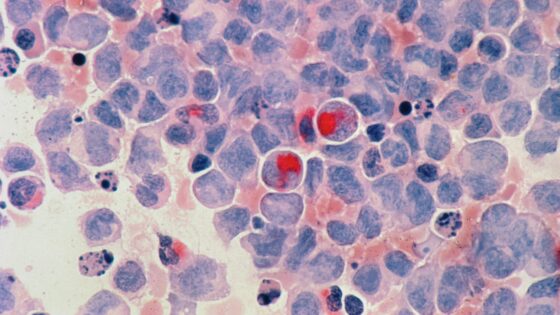
Credit: ESO/M. Kornmesser
How can something so hot be so cool?
Here’s something to cogitate on: the things on this planet that we accept as solid, sturdy matter are on that way because of our planet’s temperature and atmosphere. Intense heat can turn even the toughest metals into vaporous clouds. That’s why copper, iron, and aluminum on the surface of the Sun are all gaseous (thank you, They Might Be Giants). Now what if I told you that there’s a planet out there that gets so hot (but not as hot as the sun), that it rains iron? And I ain’t talking in bricks.
According to a research paper published in Nature, scientists have discovered a new exoplanet about 390 light years away, a stone’s throw from the constellation of Pisces, relatively speaking. This exoplanet, codenamed WASP-76b, has an incredibly hot surface, clocking in at over 2,400 degrees Celsius (or 4,352 degrees Fahrenheit). There’s lots of natural iron on the planet’s surface, but when it reaches peak temperature during the day, the iron gets so hot that it completely evaporates. Then, when things cool down at night, the iron vapor condenses into liquid droplets, and they fall back to the planet’s surface to do it all over again. Cool, huh? Well, hot, actually, but still pretty cool.
WASP-76b is an Exotic Exoplanet. It is Scorching Hot. And It Rains Molten Iron. #WASP76b #IronRain #RainofIron #Exoplanet #Astronomy
"If you are on that planet, you will definitely meet death with a thousand cuts."https://t.co/OPeC2DSCPy
— Microcap Observer News (@MicroCapONews) March 12, 2020
WASP-76b’s conditions were discovered through the use of a specialized observational device: the Echelle Spectrograph for Rocky Exoplanets and Stable Spectroscopic Observations, AKA “ESPRESSO.” Man, I love acronyms. Using ESPRESSO, scientists were able to spot the chemical differences in the planet’s atmosphere and surface during different times of day, which was how they came to their conclusion.
“Just like the Moon around the Earth, this planet always keeps the same face towards its star as it rotates around it, which causes this extreme difference in temperature between day and night on the planet,” explained Jonay I. González Hernández, one of ESPRESSO’s operators.































